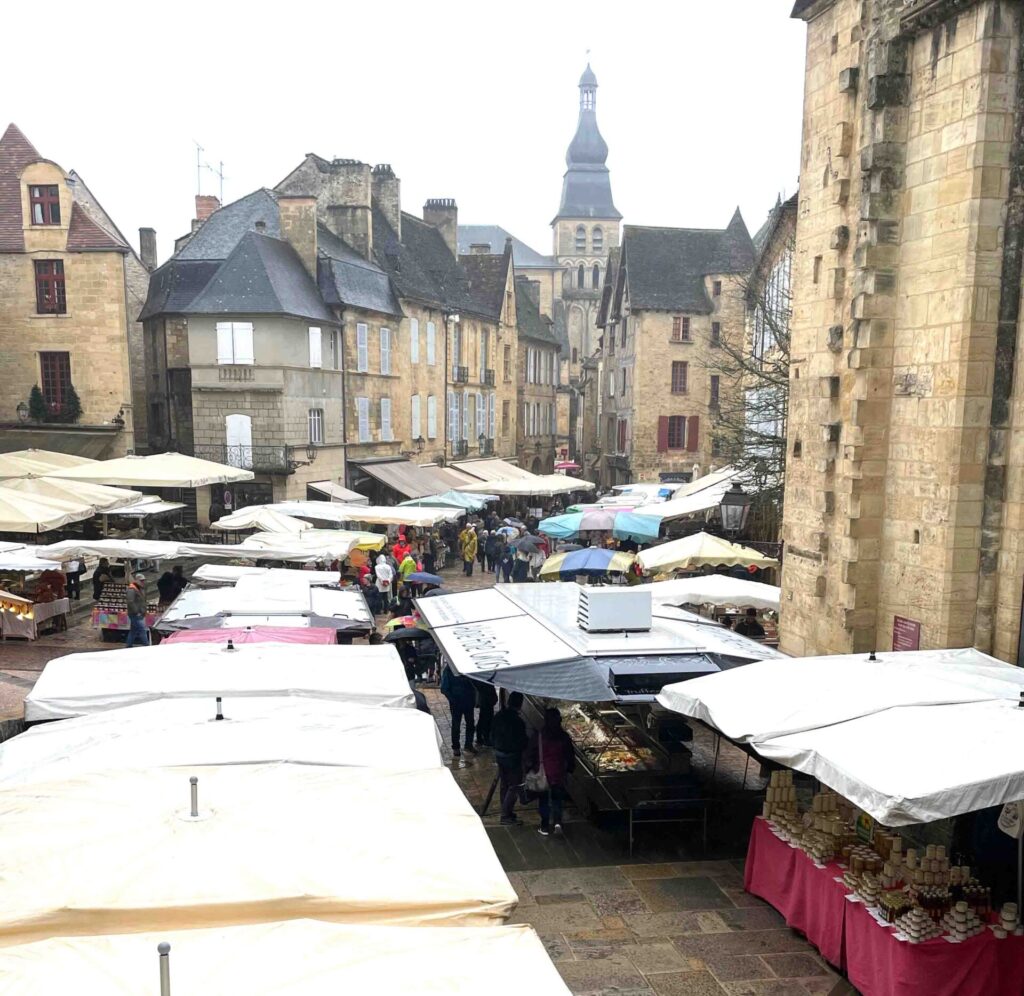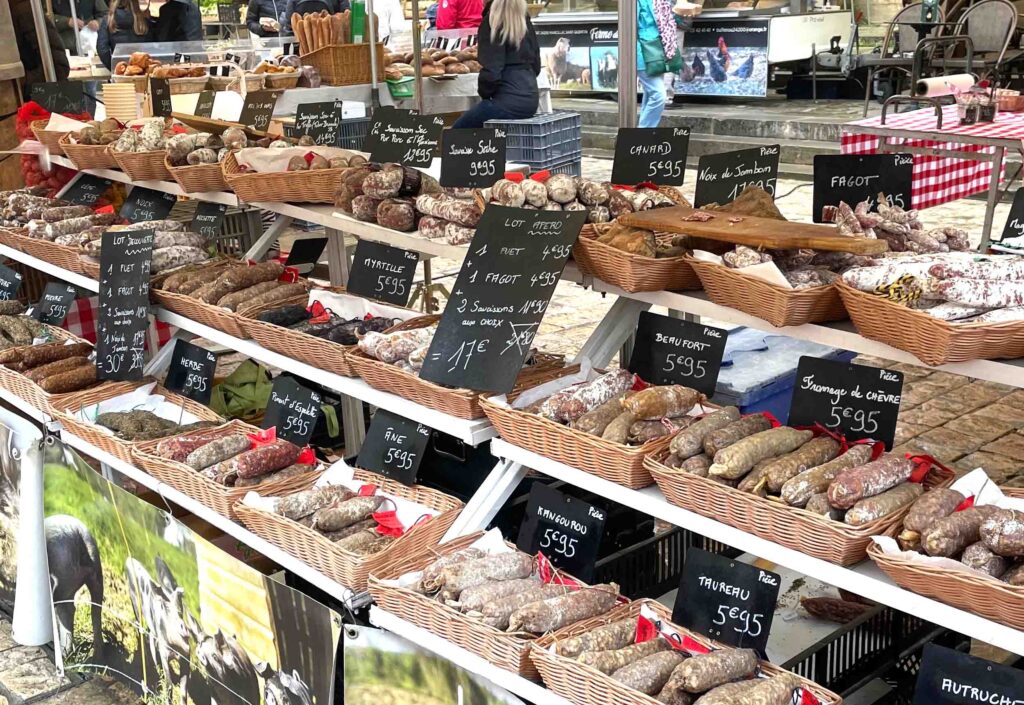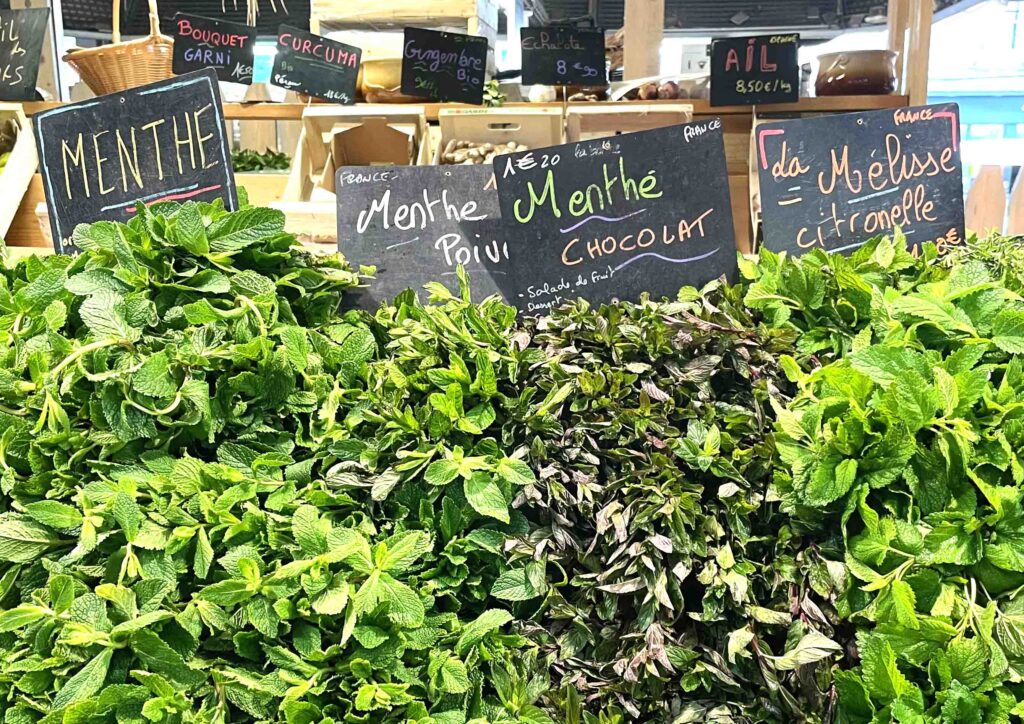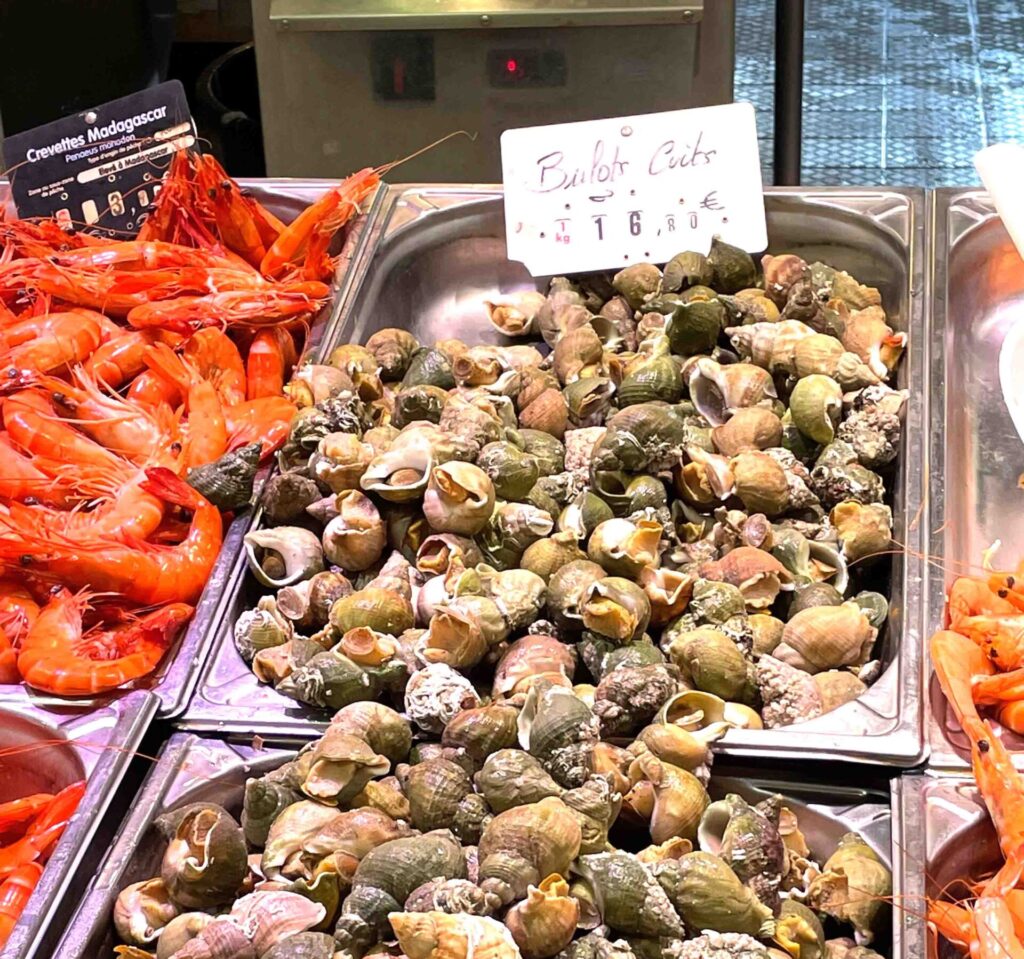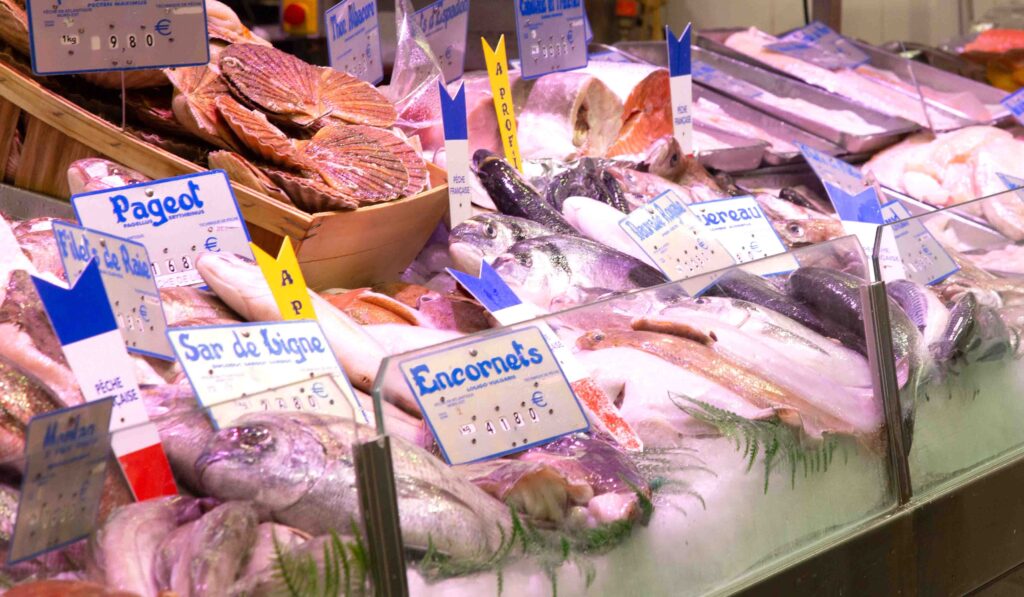During a recent visit to three food markets in France, I recalled the quote by French gastronome Jean Anthelme Brillat-Savarin: “Tell me what you eat, and I will tell you what you are.” Would these markets explain who the French people are? Or, at least, how they see their food?
Marché du Sarlat
My first stop was the Wednesday-morning open-air market in Sarlat-la-Canéda, the jewel of the Périgord and home to all things gourmet: truffles, foie gras, duck in multiple forms, fresh nuts, and more. The day opened with a light mist, but that didn’t stop shoppers. The winding streets leading to the Place de la Liberté were filled with people, and in the cafés throughout the square sat more, fortifying themselves with a coffee and croissant before joining the shopping frenzy.
Because it was mid-April, the fresh produce was not quite as abundant as it would be later in the spring. However, several vendors offered a hearty selection of potatoes, leeks, and onions, as well as the ghostly white asparagus that is popular in this region. At this early point in the season, most vendors were selling preserved foods. Jars of jam, jelly, and conserves made with last year’s harvest of blueberries, strawberries, and figs stood between piles of dried sausage that had me dreaming of charcuterie spreads.
Other stands sold fresh cheeses, including cabécou, the soft goat cheese that is ubiquitous in salads in the town’s bistros. Here and there, baskets were filled with net bags of huge walnuts, but unfortunately for me, I don’t check a bag when I travel, so there wasn’t room to take any home. Of course, multiple vendors (as well as what seemed like every other shop in Sarlat) carried row upon row of small cans of foie gras and various pâtés. Somehow, I made it through with only a few small items as souvenirs, which handily fit in my carry-on-only luggage.
Marché des capucins
After Sarlat, I traveled to Bordeaux, home of the magical Marché des capucins, named for the Capuchin monks who once lived the neighborhood where the market is located. The first weekly market was held on this spot on October 2, 1749. After the French Revolution, cattle were sold here, first weekly, then daily. Little by little, food producers and farmers moved in, making the market a community hub for both commerce and socialization.
In the mid-1800s, following the European trend of covering food markets, the city of Bordeaux built the structure used today, using metal beams left over from the 1878 Paris World’s Fair. Since the end of the 19th century, the Marché has been the “belly of Bordeaux,” bringing together and feeding the community. The market has undergone a series of upgrades and improvements over the last two decades and remains a busy destination for both vendors and shoppers.
Throughout the market, the array of fresh seafood, neatly arranged on sparkling ice chips, was as beautiful as art displayed in a museum (at least to me!). Butchers, bakers, fruit sellers, spice vendors, and wine purveyors—all work together under one roof to provide everything you’d need to create an extraordinary meal, or just your daily lunch.
Because I’d been eating out every meal for nearly two weeks, I decided to have something a little lighter that evening, so I picked up a small quiche and some carrot salad—and a croissant (or two).
Marché de l’Aligre, Paris
My final stop in France: Paris. Where some tourists have their must-see list of the Eiffel Tower, the Champs-Élysées, and the Louvre, my first destination was a bit off the beaten tourist path: the Marché d’Aligre, southeast of the Place de la Bastille. This historic market opened in 1781 as the Marché Beauvau, named for the abbess of the Citeaux Abbey, which once stood on this site. The name “Aligre” came in 1867, in homage to Étienne François d’Aligre, the first president of the Parisian parliament.
In the covered section of the market, much like in Bordeaux’s Marché des capucins, a warren of vendors offers up fresh seafood—many species of whole fish, mounds of bulots (whelks), and in-the-shell scallops—everyday and exotic herbs and spices, perfectly ripe produce, and baskets full of freshly foraged mushrooms. My favorites are the shops dedicated entirely to oysters (les ostréiculteurs) and the overflowing displays of the boucheries, boulangeries, and pâtisseries.
Again, being early in the season, many of the colorful fruits and vegetables were likely imported from warmer climates, but several vendors provided plates of samples, to prove the freshness and tastiness of their offerings. Outside the covered building, vendors sprawled along the sidewalks of the Place d’Aligre and even extended down the surrounding streets. With so many delicious choices to make, I could understand why shopping here can take hours.
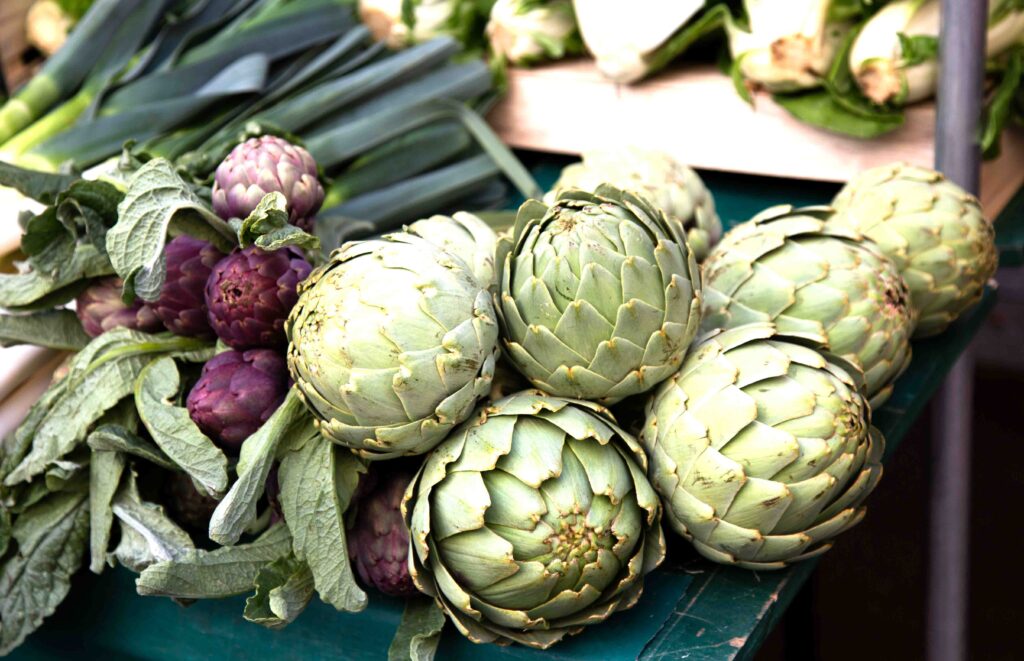
What struck me about these markets was that no one was in a hurry. A visit to the marché wasn’t the same as popping into the supermarket after work to pick up something quick for dinner. Instead, these markets reflected the relationship between the French and their food—freshness is king, and you take your time shopping, chat with the purveyors, and have fun doing it.
Pamela Hunt
